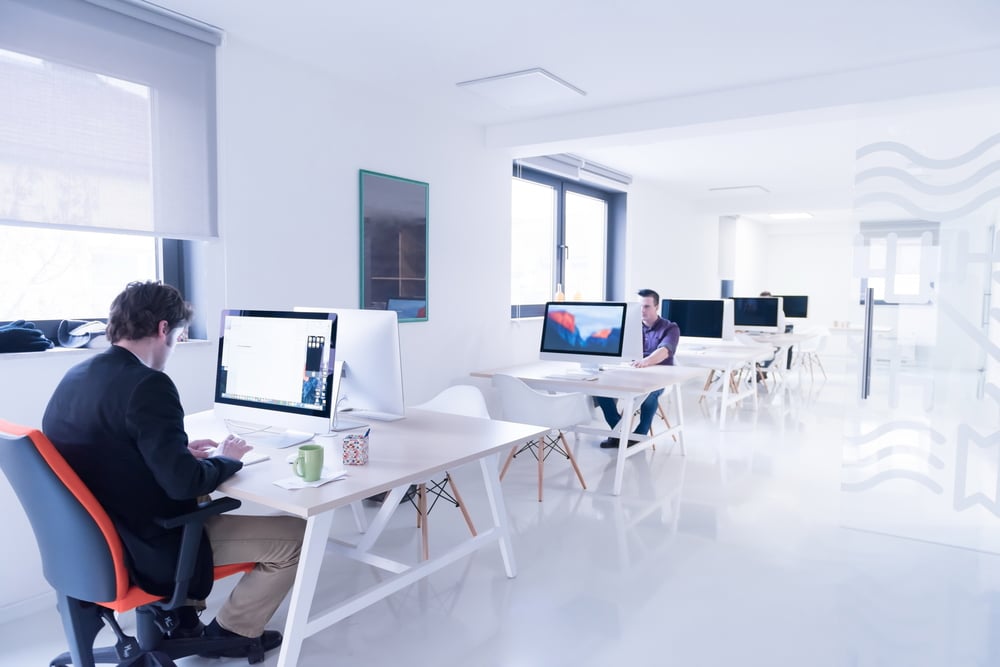 Companies around Florida are getting ready to get re-situated in the office, often after weeks away. Getting your building ready is just one step in a comprehensive re-opening plan, but it is crucial: The safety of your employees depends on the safety of your grounds.
Companies around Florida are getting ready to get re-situated in the office, often after weeks away. Getting your building ready is just one step in a comprehensive re-opening plan, but it is crucial: The safety of your employees depends on the safety of your grounds.
Whenever a facility is vacant for a while, issues can arise. It’s vital to take care of these proactively in advance of returning personnel. With a few days of preparation, you can reopen with confidence, knowing you’ve done everything you can to achieve success.
Here are the key steps to follow:
1. Inspect the Grounds for Maintenance Issues
Maintenance matters that might arise in your absence depend on your industry.
Ask yourself:
- Are there any active safety hazards to deal with, like broken windows?
- Do you have any equipment that needs to be brought into a ready state?
- Do any supplies need replenishment or replacement due to downtime?
It’s a good idea to check on safety systems such as fire alarms, fire extinguishers, and sprinklers. Visit each area of the building systematically and make note of anything that must be addressed. Power up your HVAC system and perform any stand-up maintenance required. Check all lights.
2. Clean and Disinfect Your Facilities Thoroughly
While both of these processes are critical, remember the differences:
- Cleaning: Removing dirt, germs, and impurities using soap (or detergent) and water
- Disinfecting: Killing the germs on surfaces or objects by using germicidal chemicals
When you combine cleaning and disinfecting, you get sanitizing, reducing the number of germs in an environment to safe levels. The Environmental Protection Agency offers guidance on disinfectants for various working environments.
As operations return to normal, consider using antimicrobial coatings like Sherwin-Williams Paint Shield in your future commercial painting plans.
3. Review and Prepare Plans for Future Cleaning and Maintenance
Many organizations are changing their strategies when it comes to cleaning. New guidance should be prepared and delivered in writing to all personnel and contractors that it affects.
If your organization is considering additional services, such as fumigation, trash removal, or third party maintenance services, develop guidelines around these to keep everybody in the loop.
Remember, any third party services you engage mean contractors will be moving in and out of your building. You can help them do their job by having answers ready for common questions:
- What entrances, exits, and pathways should contractors use?
- Can contractors access water/sewer and electrical hookups?
- Can contract staff use on-site restrooms or other amenities?
4. Reconfigure Reception, Meeting, and Gathering Areas
Experts recommend reconfiguring seating to improve distance between personnel. Mark and signpost the direction of foot traffic where possible. In industrial environments where safety striping indicates paths, verify that markings are clearly visible.
Discontinue on-site food and beverage consumption or switch to single-serve items. Reduce the seating capacity of each room to enhance personal space. Convert small rooms to use for single occupants only and remove high-touch shared tools like whiteboards and remote controls.
Post appropriate health and safety reminders based on your latest policies around the building, starting in areas where people congregate. Be sure they know where to go to find out more.
5. Control Access Points
Building reception, shipping and receiving, and elevators are all potential hazard points. Check that all entry points are adequately secured. Signpost policies for visitors who may need to enter the building, such as delivery personnel. Consider removing any touchscreens.
Many enterprises are installing plexiglass shielding at strategic points. Shielding can help create designated zones of travel and maintain distancing. Plan out your needs for sanitizer and wipes, including materials that members of the public will be expected to use.
6. Plan Personal Protective Equipment (PPE) Policies and Distribute Materials
Industrial workplaces where PPE is already common are at an advantage when it comes to re-opening. They may already have sufficient gloves, masks, and other materials to continue their regular operations. Others will need to consider where to source materials from.
Ensure everyone knows about PPE expectations from the beginning, especially if they are being introduced or becoming more stringent than before. Remember, providing professional PPE is much more effective than allowing personnel to bring what they can find from home.
7. Designate Storage Areas for Personal Goods
A secure, enclosed room should be used for staff to store personal belongings at the start of every day and retrieve them at the end of shift. If you are instituting designated storage for the first time, give personnel sufficient time to retrieve items at day’s end to avoid crowds.
8. Perform All Repairs and Remediation Before Opening Day
As you uncover tasks that need to be completed before opening day, keep a prioritized schedule. Everyone involved in reopening plans should have access and be able to collaborate, both from the workplace and at home.
As everyone gets back to work, you may find that your opening day procedures may change along the way. Keep detailed notes as you fine-tune your new procedures and process.
{{cta(‘9356bbf0-d14e-480d-988b-2427a4af661a’)}}






